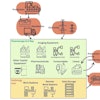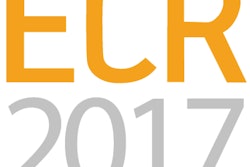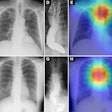Women undergoing conventional angiography have a 62% higher risk of kidney problems after contrast than a demographically similar group of men, researchers found in an analysis of more than 1,000 patients that will be presented at the National Kidney Foundation's Spring Clinical Meetings this week in Las Vegas.
Contrast-induced nephropathy (CIN), the third leading cause of hospital-acquired acute kidney injury in the U.S., is associated with increased morbidity and mortality. However, it's unknown whether female gender influences the development of CIN, noted the authors from Henry Ford Hospital in Detroit.
In their study, resident Dr. Javier Neyra and colleagues examined 1,211 patients who underwent conventional coronary angiography at Henry Ford in 2008 and 2009. They hypothesized that women "may be at higher risk of nephropathy after angiography," Neyra said in a telephone interview with AuntMinnie.com.
"When we looked at gender differences, we tried to look at all the variables that we know affect contrast properties in coronary angiography," Neyra said. "There's a well-defined risk score -- the Mehran score -- so we checked all of those variables."
The Mehran score calculates the risk of contrast-induced nephropathy following percutaneous coronary intervention (Journal of the American College of Cardiology, October 2004, Vol. 44:7, pp. 1393-1399).
While some minor demographic differences separate the study's male and female cohorts -- notably, the women are a couple of years older than the men (mean 64.1 years versus 62.1 years) and slightly more hypertensive (60.9% of women versus 53.3% of men) -- "logistic regression analysis shows that [gender] may be an independent risk factor for nephropathy," he said.
Excluded from the study were patients with baseline estimated glomerular filtration rate (eGFR) less than 15 mL/min/1.73 m2 and those with double contrast exposure or need for acute or chronic dialysis. Contrast-induced nephropathy was defined as an increase in creatinine of 25% or more from baseline, an absolute increase in creatinine of 0.5 mg/dL or greater, or a decrease in eGFR ≥ 25% within 72 hours of contrast exposure.
The study cohort of 1,211 coronary angiography patients included 530 (43.8%) women, including 288 with eGFR ≥ 60 mL/min/1.73 m2. Among these patients, contrast-induced nephropathy occurred in 105 women (19.8%), compared with 93 men (13.6%) (p = 0.004), Neyra said.
After adjustment for possible confounders, multivariable analyses indicated that female gender was an independent predictor of contrast-induced nephropathy (odds ratio [OR] = 1.62, 95% confidence interval [CI]: 1.17-2.21, p = 0.003).
Other nephropathy predictors included the use of furosemide (OR = 2.53, 95% CI: 1.83-3.47, p < 0.001) and contrast media volume greater than 100 mL (OR = 1.44, 95% CI: 1.04-1.98, p < 0.001).
The slight age difference in the cohorts is unremarkable, Neyra said, because women tend to get heart disease when they are older, most often after menopause.
Previous studies have also found that women are at greater risk following the use of contrast and percutaneous coronary intervention, which is logical due to a higher rate of comorbidities. But following logistic regression analysis, female gender per se has never remained as an independent predictor, Neyra said.
"In our cohort, we put all the variables together and still we found some differences in gender, suggesting that there are some gender-specific differences," such as platelet aggregation, he said.
Yet it remains unknown whether the apparent difference in nephropathy risk is related to this or other factors, he said.
Another important factor is the difference in body size between the genders. In the present study, the volume of the iso-osmolar contrast agent was adjusted by body weight to account for most of the difference, he said, but there may be other measures of body size showing that women still received comparatively more contrast.
Measuring weight and height instead of just weight may lead to better adjustments in contrast volume, he said. Women received a mean 119 ± 94 mL of contrast, compared with 146 ± 100 mL for the men.
"We may be looking at intrinsic risk factors related to gender that could be influenced by hormone levels, specifically estrogen, or related to other specific responses to contrast in females," Neyra said. "We don't know, but [the study] raises some suspicions that female gender is an independent risk factor."
The study cohort is being followed for morbidity and mortality outcomes, he said. A prospective study of premenopausal versus postmenopausal women who undergo coronary angiography, in addition to basic animal research examining contrast response in the two genders, would also help resolve lingering questions, Neyra said.
For now, the group's main recommendation is that physicians pay more attention to women when they are receiving contrast.
"We already know that when they present, they are older, have more comorbidities, and take more medications, and we suspect there may be preventive factors" that would help mitigate the risk, including "close surveillance and IV hydration with normal saline," he said.



















